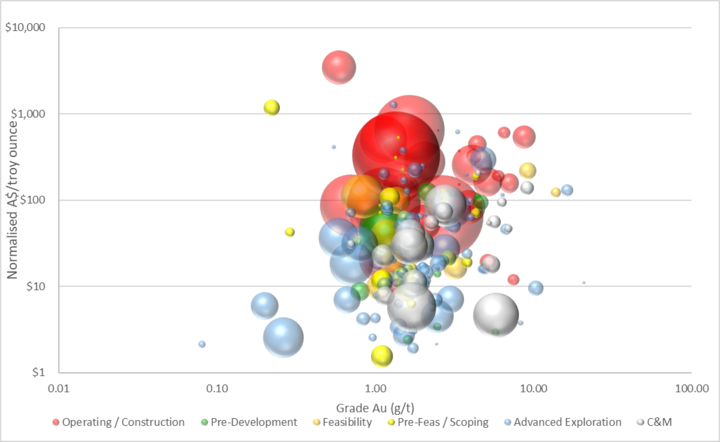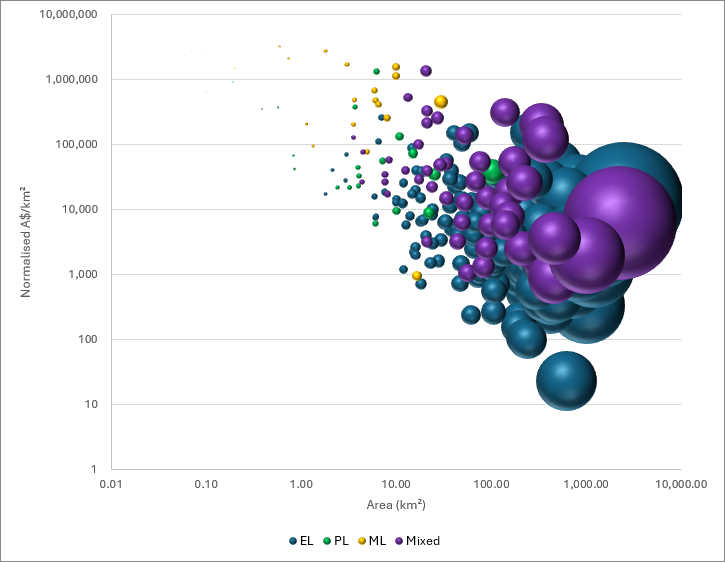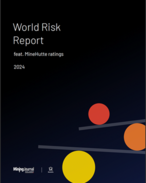Estimating the value of a mineral asset is often problematic, particularly at the exploration stage where value is usually perceived rather than quantified. Once quantifiable results such as a mineral resource are demonstrated, it becomes easier to tie the estimated value to concrete realities transparently. Until this time, practitioners could be exposed to accusations of subjectivity, human bias, errors in logic and a lack of transparency.
To minimise the potential for such accusations, international mining consultancy SRK Consulting has created valuation software to help generate defensible valuations easily and rapidly.
In general, asset valuation relies on three alternate viewpoints to estimate value — through reference to an observable market, the income generation potential and the historical cost of the asset. Each of these perspectives and approaches has its strengths and limitations.
Market approaches focus on comparing the assets to similar projects with a known market value. The Comparable Transaction Method (CTM) adopts the same logic as a real estate appraisal — it evaluates a mining asset by comparing it to recently transacted similar assets. In this way, it reflects prevailing market conditions.
The method adopts a retrospective viewpoint because it relies on precedent but observable transactions, but can provide accurate results if the adopted transaction data is robust and sufficiently recent. Certain adjustments could be required, as no two mineral assets are the same. The CTM can also be applied at any stage of an asset's life from early exploration to operational and post closure.
It is often argued that CTM is difficult to apply as no two assets are the same and due to the shortage of suitable data. However, Australia is relatively well endowed with most commodities and benefits from a reasonably transparent reporting regime, including the Australian Securities Exchange (ASX) reporting requirements. As a result, there is always sufficient publicly available data to support the method.
Australian gold - resource transaction multiples (~10 years).

In fact, in Australia, the greater challenge is often managing the large volume of available data and keeping transaction datasets up to date and complete.
In other parts of the world, this is not always the case — especially with niche or less common commodities. In these cases, it is acceptable to turn to other jurisdictions for comparison but it is crucial to maintain consistency. For example, grouping together more economically developed or less economically developed countries and taking into account factors such as country risk or access to export markets — including differences between landlocked countries and those with ports — can help ensure a fair comparison.
Another market-based approach for more advanced mineral assets adopts a Rule of Thumb or Yardstick Method, which applies standardised percentages to the prevailing spot price of a commodity and the contained metal content in the mineral resource — or exploration target — to estimate market value.
This method is simple and quick but may lack precision. It is a secondary method commonly applied to resource projects across most commodity types and used to crosscheck the values implied by other methods.
"I've often wondered whether — due to simplicity — the industry uses a Yardstick Method at the early stages of development — and before other income-based methods come into play — as the basis for setting transaction values, which are then reflected in transaction data, thereby effectively creating a self-fulfilling loop," says Mathew Davies, a geologist and senior consultant at SRK Consulting based in its Newcastle, New South Wales office.
The most used ‘standard' yardsticks are 0.5%, 1%, 2% and 5%, which relate directly to the mineral resource confidence categories and contained metal contents. It is important to note that standard yardsticks do not apply to all minerals. For example, the Yardstick Method does not work well with iron ore, especially where magnetite is the primary ore mineral. Interestingly, until around 2015, another bulk commodity — coal — used to reconcile well, but this is no longer the case with implied values having generally diverged from other methods.
Alternatively, cost-based approaches assess value based on expenditures and geological data. The Geoscientific Rating Method (GRM) — or Kilburn Method — evaluates an asset's potential using a matrix of geological and geoscience factors applied to a unitised cost base, known as the project's base acquisition cost (BAC).
This method provides a scientifically grounded valuation by assessing the prospectivity of the asset based on the immediate surrounding region, the project's maturity, local geology and any analytical data or test work.
GRM is widely used as a secondary valuation method for early-stage exploration tenures in Australia. The determination of the BAC is often subjective, and inputs vary between jurisdictions as expected. However, what to include or exclude, and the method of calculation varies between valuation practitioners.
Recently, regulators have placed more scrutiny on the calculation of the BAC, requiring workings to be disclosed and requiring valuers to calculate BACs rather than cite other practitioners in unfamiliar jurisdictions where they lack local knowledge. Ultimately, this has resulted in a wider range of BACs being used in the industry, contrary to the intent of the original method paper.
Another cost-based method — the Multiple of Exploration Expenditure (MEE) — values an asset based on previous and anticipated exploration costs, applying a multiplier to these expenditures. The method is straightforward but relies on the appropriate recognition of relevant expenditure on a project to determine value. The MEE method relies upon detailed knowledge of the costs of the exploration undertaken and the impact on the prospectivity of the asset and future exploration efforts.
Unfortunately, while successes are heralded, failures are often not mentioned or communicated well. The costs are usually lumped together on an annualised basis, meaning the true costs of success and failure cannot be readily separated. Furthermore, only past expenditures considered reasonable and productive should be retained as value, and usually limited to within five years.
Ultimately, the MEE's successful application is in the hands of the commissioning company's accountants — unlike the Comparative Transaction Method and Kilburn Method which are largely controlled by the valuation practitioner.
Income-based methods estimate and adjust the expected cash flow from an asset to determine a net present value. However, due to the multitude of assumptions required and their associated uncertainty, the method is strongly discouraged at the exploration stage. It requires at least the completion of a pre-feasibility study and the estimation of resultant Ore Reserves to be considered reliable.
In practice, valuing early-stage exploration assets involves a combination of methods to achieve a comprehensive and balanced view of an asset's potential value.
"Exploration valuation of mineral assets across the exploration and development stages is something of a dark art," adds Davies. "While there is science and rigour behind the process, there is also a certain amount of subjectivity, and reliance on previous experience is integral.
"SRK's approach has always been to let the data drive the logic and the initial value outcomes. The more data available, the more this initial opinion is driven by real numbers that are observable and grounded in fact with the least subjectivity.
"However, practitioners cannot get away from subjectivity. As geoscientists, we work with naturally complex systems that span millions of years and at a range of scales. At some point, practitioners must refine their value estimates to define a range which is as narrow as possible; otherwise, it becomes meaningless to investors."
Since 2016, Davies has led the development of SRK's Mining Valuation Data Platform (MVDP). This innovative software provides a custom database platform and valuation system that streamlines the valuation process. It semi-automates key inputs and outputs in the process to reduce the introduction of errors and improve the repeatability and defensibility of the valuation outcome. Essentially, MVDP is like a modelling tool — it is designed to minimise the amount of subjectivity associated with mineral asset valuation.
West Australian gold - area based transaction multiples – excludes any transaction with Resources (~10 years).

MVDP adopts the key valuation methodologies used by SRK's practitioners and is most commonly applied at the exploration stage, with CTM providing the cornerstone of the platform. SRK's MVDP can handle most commodities and jurisdictions enabling rapid evaluation of polymetallic projects, multiple currencies and price-paid type information.
"Practitioners typically try to put all information into one spreadsheet, which may require the estimation of metal equivalency, currency conversion, standardisation of the financial consideration (between cash, shares, contingent or deferred payments and so on)," says Davies. "These transformations can get quite complicated. So, MVDP's design supports that process by automatically importing the currency and stock price information via application programming interfaces, with all data able to be graphed and analysed within a single system.
"As a result, MVDP reduces manual transformations and thus the potential for errors and extensive data formatting. Each project can be evaluated on its constituent metals, such as copper, gold and silver, or as a copper-gold project, or converted to a pure copper equivalent. This enables the evaluation of all variations even in similar deposit styles, in addition to the mix of metals.
"In SRK's experience, building one spreadsheet that can track and analyse this data effectively is almost impossible. MVDP enables SRK to consolidate multiple spreadsheets of transactions spanning different metal mixes, jurisdictions, currencies and geopolitical regions into a single point of reference. It also enables new data to be captured efficiently and cross-referencing transaction information with Mineral Resource information."
In conclusion, Davies says that the traditional methods of valuing exploration assets come with several challenges. "By semi-automating a multitude of complex procedures and ensuring consistency across the valuation process, MVDP can significantly improve the accuracy of the valuation outcomes, while reducing manual errors," he adds. "The ultimate objective is to ensure that SRK's valuations are objectively reasonable, repeatable and defensible, with minimal subjectivity. However, subjectivity cannot be eliminated completely as valuation will always remain a combination of art and science to some degree."


























